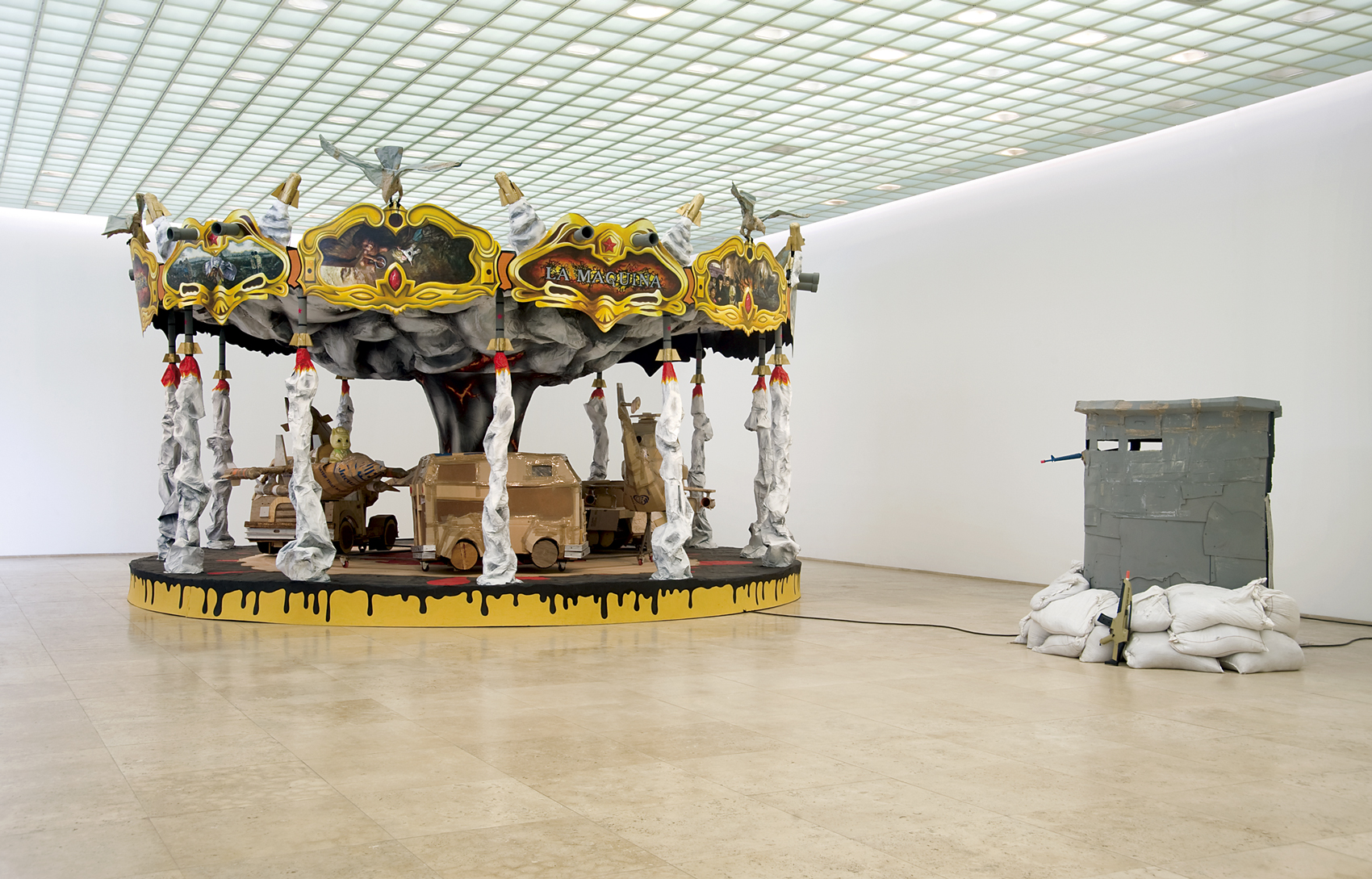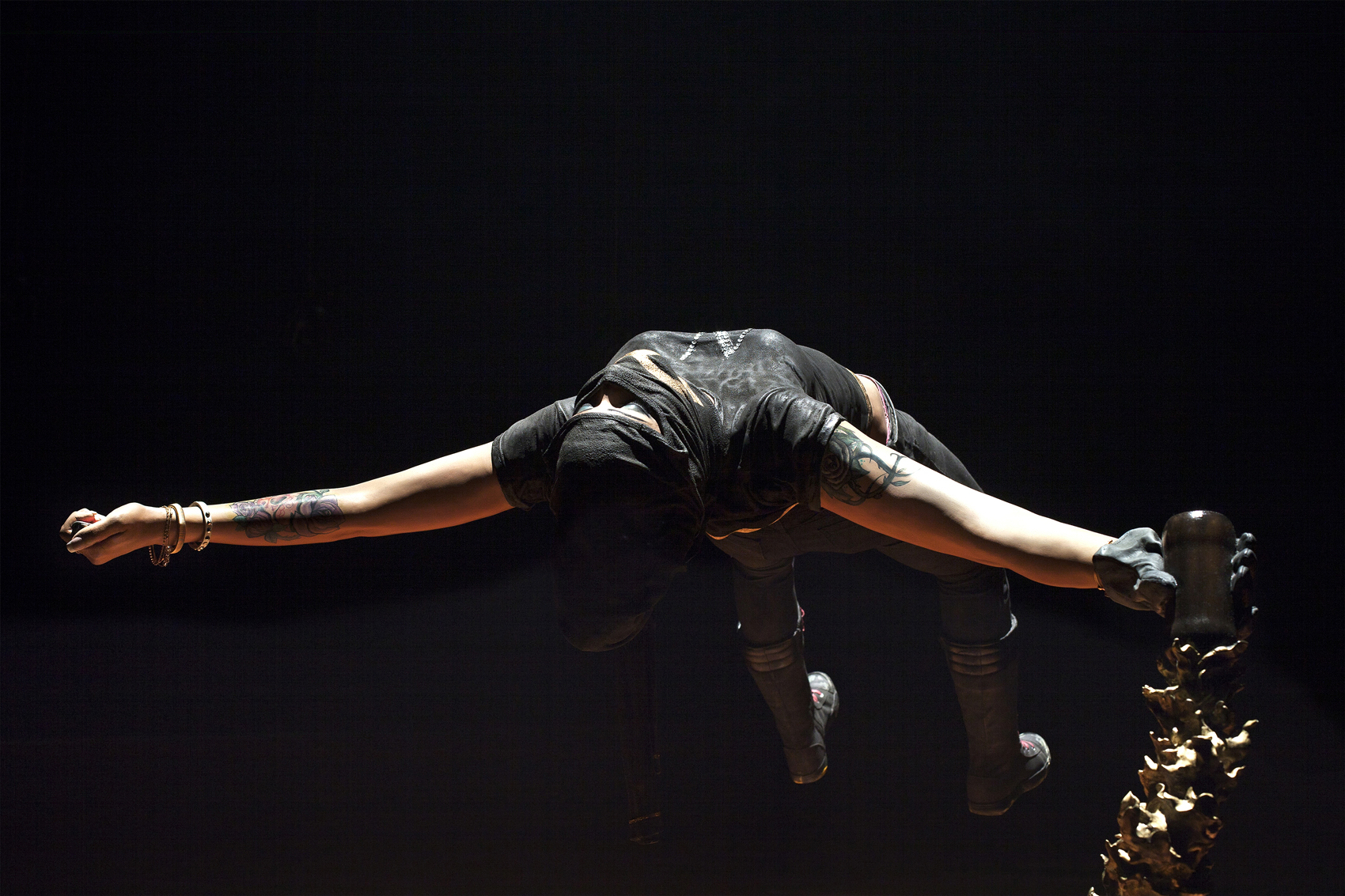Chapter Five
The Toy
Only four years after being born in Lautaro in 1971, Norton Maza moves to France with his father, who was exiled after being detained for two years, during dictatorship. In 1980 he changes country again, this time to Cuba, to start studying art, and returns to France in 1985 to complement his studies in the Bordeaux Academy of Fine Arts. The artist’s memories of Chile when he was little are scarce, being much fresher those that marked his childhood and adolescence in Cuba, where the precariousness of maybe not so urgent matters, made him develop his creativity. For example, toys were scarce and he started making his own since very little.
Toys were scarce and he started making his own since very little
Living in France, he visited museums and cultural centres with his family and was amazed by which, to him then, was something like special effects, not understanding much how that was possible to achieve. Entering adolescence and starting his art studies, he could understand how all that could be done and the convergence of all experiences made him realize he’d be an artist.
Back in Chile in 1994, he made an assimilation between what his experiences in Cuba and France were like, noticing the existing big economic and social difference, apart from many other bad habits in the way of acting in society and with people. Thus, his materials and the shape his work takes as recreations, are thought as a criticism, but from the reflection to install in the spectator the questioning on how the political, ecclesiastic and economic systems work as oppressors that operate like networks to control and take advantage of the contrast of globalization.
An example of these contrasts and use of material in his work is “Territory” (2004-2008), which has stages from I to IV, each of which was exhibited in different contexts, and representing parts of a house with waste material. “Le Royaume” is a I:I scale limousine, also built with waste materials, installed at the entrance of the France Embassy in Chile (2008).
His materials and the shape his work takes as recreations, are thought as a criticism
“Levitación del deseo” (Desire Levitation) from 2013, is a golden ingot that rotates on its own axis and levitates on a plinth, being at the same time a criticism and irony of the dominant system to which individuals succumb. The same year, “Del paisaje y sus reinos” (About the landscape and its kingdoms) is exhibited in the Contemporary Art Museum MAC. A construction that depicts a I:I scale bunker, in which sculpture pieces, made by the artist, and objects found and reused, show and incarnate symbols, dogmas and structures of contemporaneity as another criticism to society from the ludic and figurative.
One of his last and most important pieces is “El Rapto” (The Rapture) from 2016, installation exhibited in the National Museum of Fine Arts, MNBA. It represents the history of society, the drama of freedom and how civilizations have been controlled. It was built around the myth of the Shu God, of ancient Egypt, who was between heaven and earth, holding the celestial vault so wild Gods wouldn’t return. Society had to behave correctly so that Shu wouldn’t let the vault go and chaos wouldn’t return. A series of objects made by the artist and others found, are displayed and lightened under that structure, presented to us like threatening objects in our daily life, which abduct a hooded young woman, seduced by consumerism, contradicting herself and showing how people can day-to-day betray themselves, as an effect of the commercial model.
Images courtesy of the artist — Photos by Jorge Brantmayer









